categories
6 Bee Activities
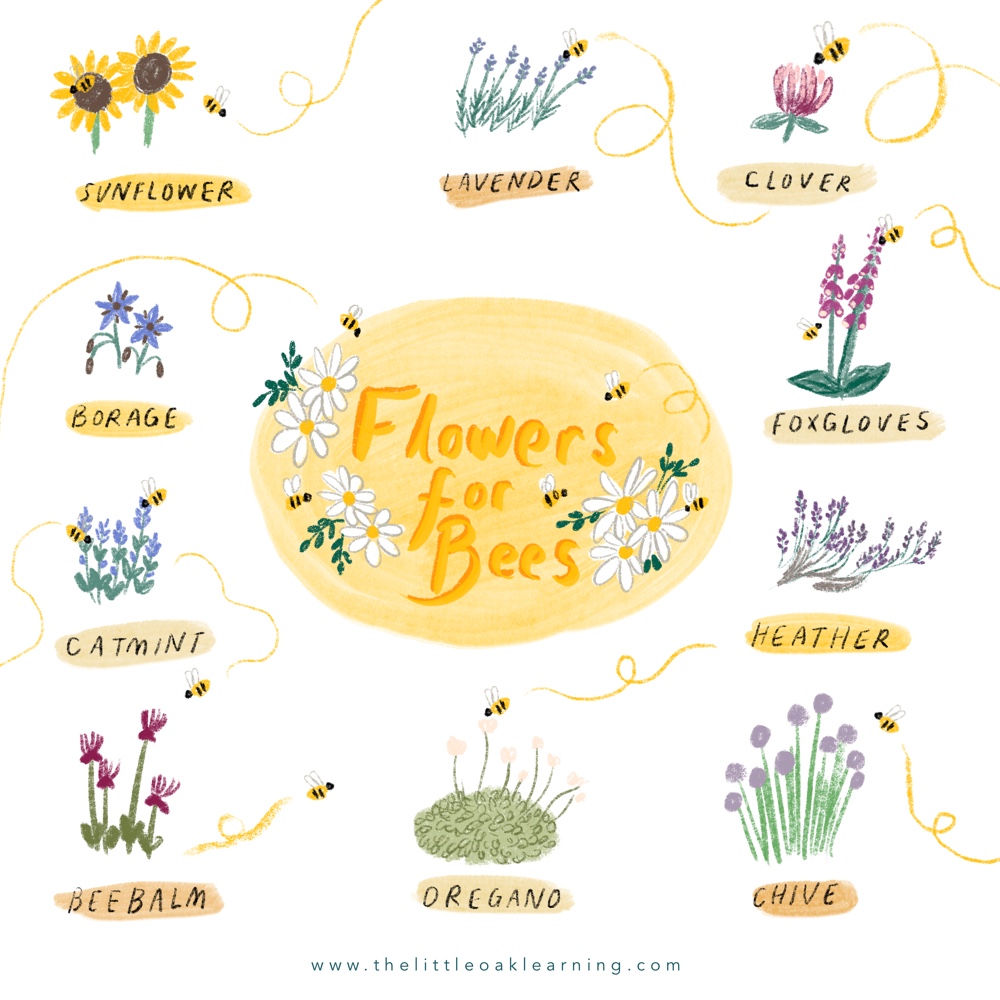
Grow plants for pollinators
Learn about pollinators; who they are, what they do, how they pollinate, and why they are so important. You can plant flowers that support pollinators and bees in your garden or balcony. I’ve shared a few plants here, but they will be different all over the world, depending on your region. Learn about your local creatures and plants and how you can support the buzzing bees. You don’t need a garden, you can use a window sill, or balcony. Or perhaps you have a community garden in your area, or you may even think about creating one on a disused piece of land.
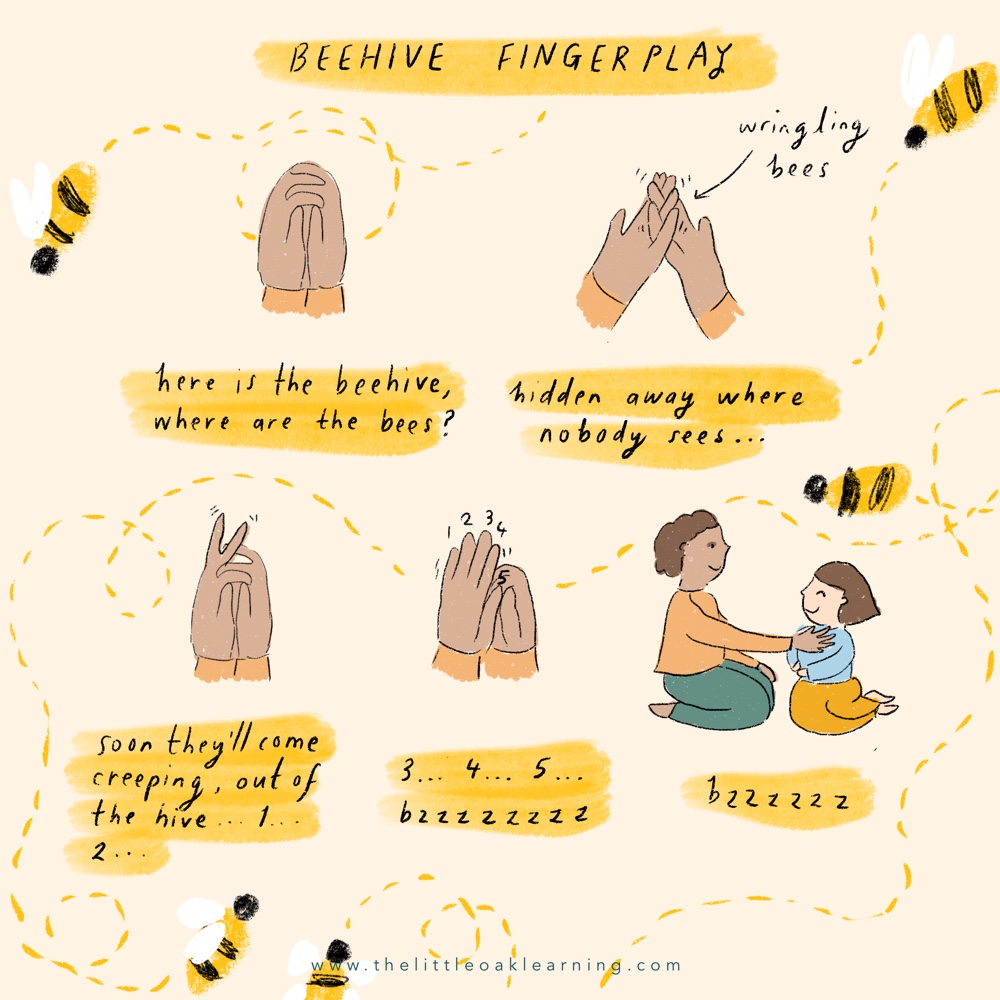
Bee song / finger play
One of my favourite finger plays is this one. It’s lovely to sing it in the summer time when the bees are busy and seen all around. Do you have a simple circle time? Perhaps you could incorporate this rhyme into your rhythm, saying it as part of a story, or after a story about bees.
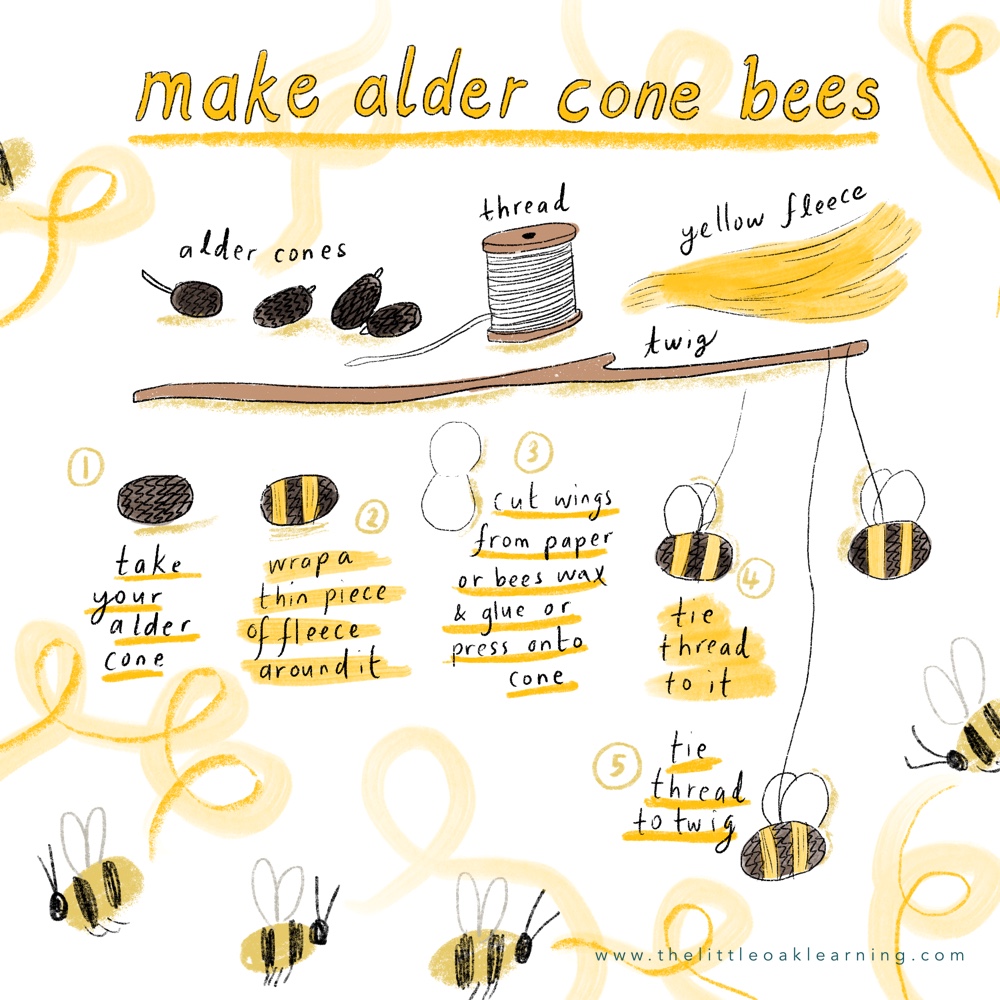
Make aldercone bee
I was taught this craft at the Waldorf parent and child group and I included it in the bees chapter of our Summer Rhythm. It’s delightful to have a few alder bees hanging from thread at the table. Perhaps you could hang a few in a posy of flowers, or from a branch that hangs from the ceiling or in front of the window. Wherever you choose, they are a simple seasonal decoration that reminds children of our appreciation and gratitude for the natural world.
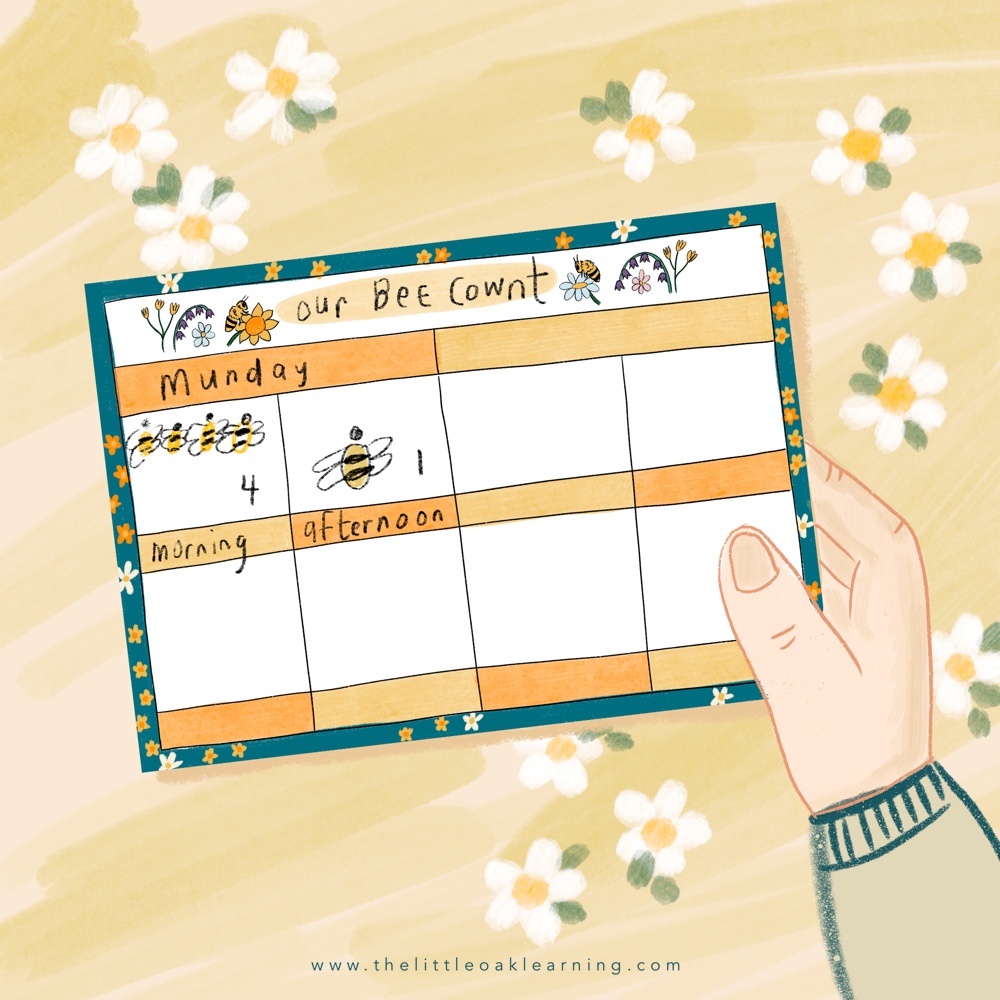
Do a bee count
One of the early stages of understanding maths is counting ‘in real life’, with real scenarios and real interest. Each child will build their relationship with numbers and understand how and why they find them useful. How many bees did we see today? How many bees can we see on this plant? Admittedly bees are tricky to count, as they move about a lot! But that doesn’t mean you can’t have a go at finding out the answers to your questions. With older children you could create a little chart and decorate it. Either draw bees in the sections of the charts or write numbers, or a tally, or both. Showing children that there are different ways of representing quantities gives them a deeper understanding of maths and all the different ways that numbers are represented and entwined.
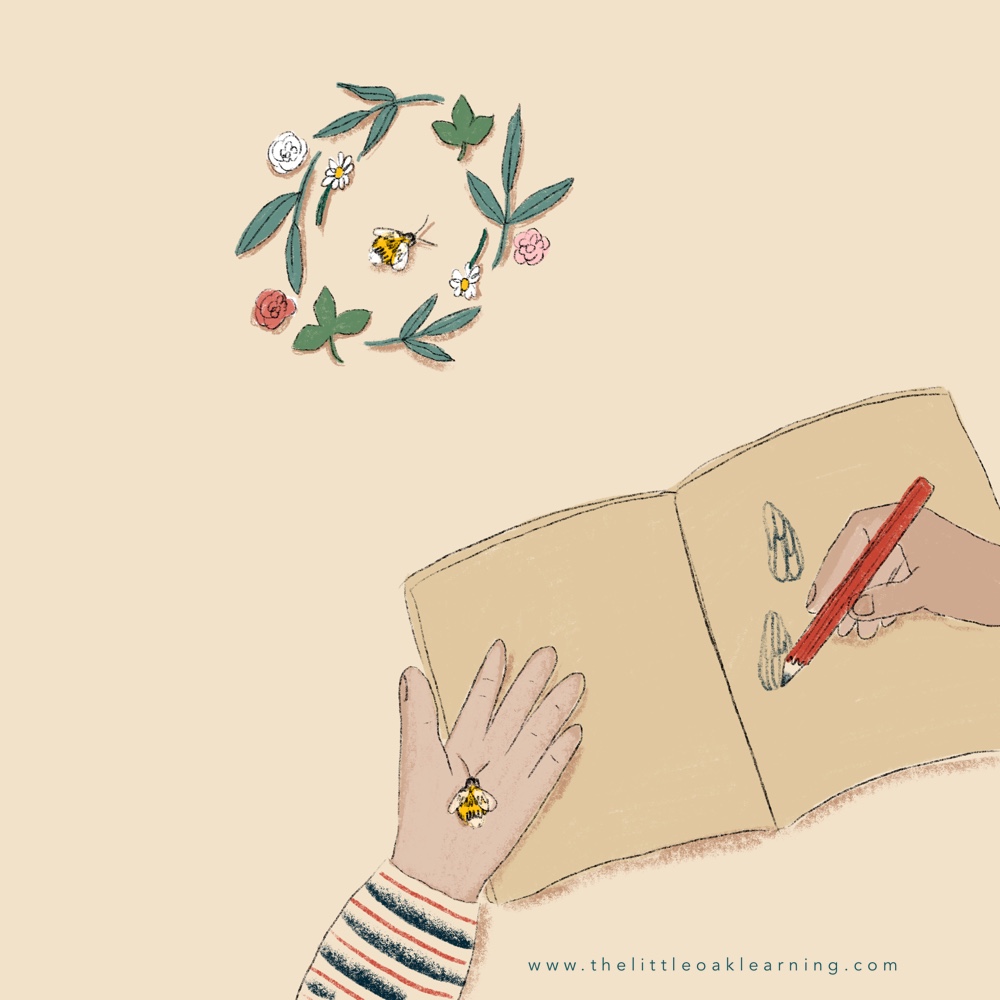
Study bees and draw them
Here we see a lot of dead bees on the ground. As a child I was fascinated by any dead creatures that I saw on the ground, and it was because it meant I could have a reeeeaaally good look at them. I remember I would screech the breaks of my bike and hop off so I could look at any little creature on the pavement. I think as adults we often shy away from dead creatures, but I think for some children (and I’d love to hear your thoughts on this) dead creatures are just a part of life and something they accept.
With all that to say, finding creatures on the ground gives an opportunity for the study of them. Next time you find a dead bee, perhaps you’ll consider taking it home and drawing it? Of course live creatures give huge scope for learning too, and ‘rescuing’ a tired bee and giving it sugar water can also be a wonderful opportunity for close up observation and study.
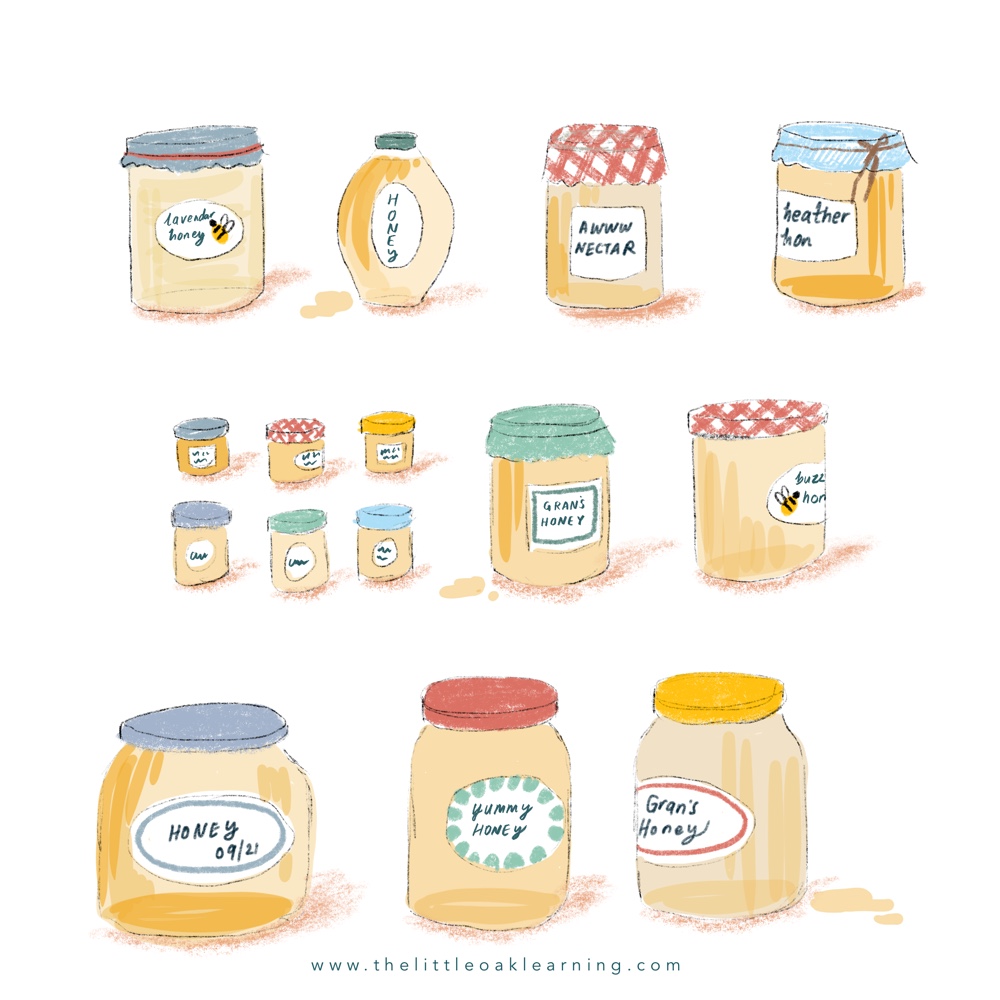
Have a honey tasting party
For those who eat honey, having a honey tasting party could be a fun end to a bee study. Encourage friends to bring a jar of honey over and try the different kinds and flavours. Perhaps try tasting with a cloth over your eyes, to heighten your senses. You could keep track of which honey is the most popular, see if people can match the honey they are tasting to the correct label, see which flavours people notice in the honey. Another idea, is to encourage friends to bring a bee or honey themed item to the party, such a honey cake.
CATEGORY
6/29/2021
COMMENT LOVE